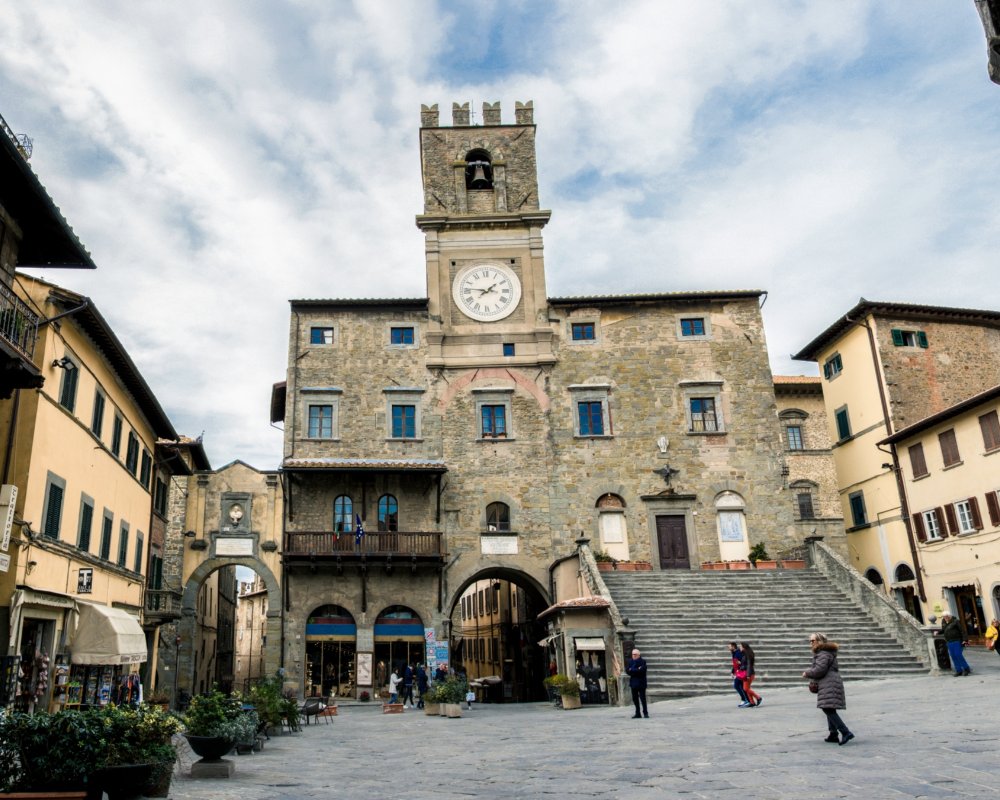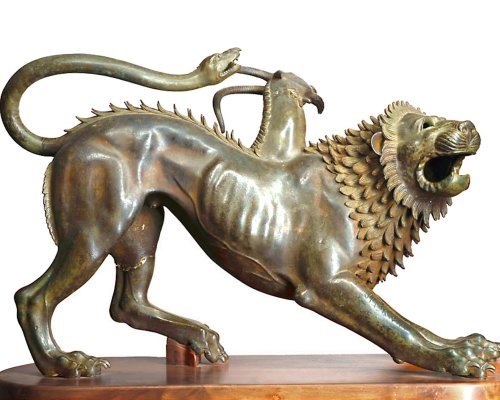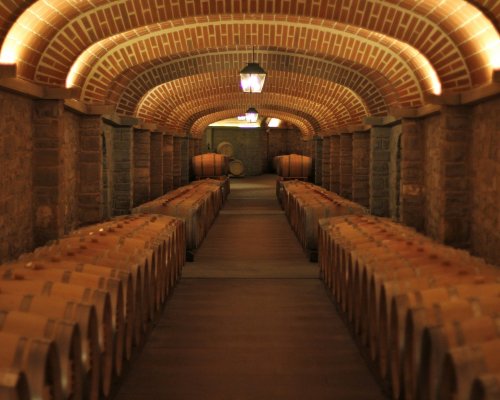Traces of the ancient civilization can still be found in and around Arezzo
The Arezzo area is home to numerous traces of the Etruscans, particularly in the Casentino and Valdichiana, which were both chosen as settlement areas due to their geographically safe locations.
Follow this itinerary for a trip through this ancient, mysterious and fascinating civilization, served with a side of Arezzo’s best hotspots for wine and architecture.
Our itinerary starts in Arezzo, one of the oldest cities in Tuscany and home to numerous points of natural, environmental and cultural interest. The city has been inhabited since the 8th or 7th century BCE, first home to the Etruscans and later the Romans. You can see traces of this distant past at the Archeological Museum, home to splendid artefacts, as well as various architectural sites throughout Arezzo and the surrounding areas.
The Roman Amphitheatre, for example, speaks to the importance of Arezzo during the imperial age, and it was way back in 68 BCE that Gaio Cilnio Mecenate was born in the city, friend and influential advisor to Augustus, and a true culture minister during his lifetime; his significance to Arezzo is indeed evident: the archeological museum is, aptly, named after him.
Arezzo was also the birthplace of Guido Monaco (also known as Guido d’Arezzo), who invented musical notes in the 11th century; and Petrarch, Giorgio Vasari and Pietro Aretino are just a few of the other great historic figures who were born here.
Our itinerary starts in Arezzo, one of the oldest cities in Tuscany and home to numerous points of natural, environmental and cultural interest. The city has been inhabited since the 8th or 7th century BCE, first home to the Etruscans and later the Romans. You can see traces of this distant past at the Archeological Museum, home to splendid artefacts, as well as various architectural sites throughout Arezzo and the surrounding areas.
The Roman Amphitheatre, for example, speaks to the importance of Arezzo during the imperial age, and it was way back in 68 BCE that Gaio Cilnio Mecenate was born in the city, friend and influential advisor to Augustus, and a true culture minister during his lifetime; his significance to Arezzo is indeed evident: the archeological museum is, aptly, named after him.
Arezzo was also the birthplace of Guido Monaco (also known as Guido d’Arezzo), who invented musical notes in the 11th century; and Petrarch, Giorgio Vasari and Pietro Aretino are just a few of the other great historic figures who were born here.
Just 30 minutes from Arezzo, the Il Borro winery is the stuff of fairy-tales, where elegance, nature, history, authenticity and wine and food culture live together in harmony. The winery-village is owned by the Ferragamo family and was designed by the architect Elio Lazzerini, who took a traditional approach of blending the commercial aspects perfectly with the beautiful medieval village and the pre-existing structures throughout the estate. Strolling through the streets of the carefully restored town is like stepping back in time, and each stone seems to have a story to tell.
Just 30 minutes from Arezzo, the Il Borro winery is the stuff of fairy-tales, where elegance, nature, history, authenticity and wine and food culture live together in harmony. The winery-village is owned by the Ferragamo family and was designed by the architect Elio Lazzerini, who took a traditional approach of blending the commercial aspects perfectly with the beautiful medieval village and the pre-existing structures throughout the estate. Strolling through the streets of the carefully restored town is like stepping back in time, and each stone seems to have a story to tell.
The Podere di Pomaio is also located near Arezzo, a “green” and organic winery designed by the architect Marisa Lo Cigno. Located in the Pomaio woods, just a 15-minute walk from the winery,you’ll find an Etruscan-Roman bridge dating back to the 2ndcentury B.C.E. The old city of Arretium got its water source from the Alpe di Poti, and this bridge was a marvel of hydraulic engineering that allowed the Terme del Prato to function properly. The bridge’s cyclopean-masonry walls inspired the designers of the Pomaio winery: Marisa Lo Cigno and her partner Pierferruccio Rossi created the walls with the same methods used by the ancient Etruscans.
The Podere di Pomaio is also located near Arezzo, a “green” and organic winery designed by the architect Marisa Lo Cigno. Located in the Pomaio woods, just a 15-minute walk from the winery,you’ll find an Etruscan-Roman bridge dating back to the 2ndcentury B.C.E. The old city of Arretium got its water source from the Alpe di Poti, and this bridge was a marvel of hydraulic engineering that allowed the Terme del Prato to function properly. The bridge’s cyclopean-masonry walls inspired the designers of the Pomaio winery: Marisa Lo Cigno and her partner Pierferruccio Rossi created the walls with the same methods used by the ancient Etruscans.
About 40 kilometers to the south of Pomaio, you’ll come to scenic Cortona, an internationally famous town thanks to Frances Mayes’ bestselling book Under the Tuscan Sun, the inspiration for the film starring Diane Lane, which introduced this corner of Tuscany to an even wider audience.
Cortona is exactly as it appears on the big screen: poetic, romantic, unique and completely peaceful. It’s a place where time seems to have no importance at all, and beauty is everywhere. It’s also a mecca for history buffs. Between the 8thand 7thcenturies B.C.E., Cortona was an important Etruscan settlement.
Despite its small size, Cortona has always set itself apart through its cultural vibrancy, and its internationally focused events and activities—a trend that goes as far back as the 18thcentury, when it became an important centre for archaeological research with the opening of the Accademia Etrusca and the Etruscan Museum, both of which were founded in 1728 and praised by passionate supporters all over Europe, including Voltaire and Montesquieu.
The MAEC (The Etruscan Academy Museum) is housed inside Palazzo Casali in piazza Signorelli, and it contains donations from Accademia Etrusca members. The museum conserves many different archaeological finds discovered in the area, including some that have been essential to Etruscan studies. Among these are a famous bronze chandelier known as the Lampadario bronzeo, the Tabula Cortonensis (one of the longest and most important texts in the Etruscan language) and a chest from the tomb of the prince known as Melone II del Sodo, containing beautiful golden jewellery. In addition to the museum, you can also visit the Etruscan burial mounds of Melone II del Sodo from the Archaic period and the tomb of Camucia.
About 40 kilometers to the south of Pomaio, you’ll come to scenic Cortona, an internationally famous town thanks to Frances Mayes’ bestselling book Under the Tuscan Sun, the inspiration for the film starring Diane Lane, which introduced this corner of Tuscany to an even wider audience.
Cortona is exactly as it appears on the big screen: poetic, romantic, unique and completely peaceful. It’s a place where time seems to have no importance at all, and beauty is everywhere. It’s also a mecca for history buffs. Between the 8thand 7thcenturies B.C.E., Cortona was an important Etruscan settlement.
Despite its small size, Cortona has always set itself apart through its cultural vibrancy, and its internationally focused events and activities—a trend that goes as far back as the 18thcentury, when it became an important centre for archaeological research with the opening of the Accademia Etrusca and the Etruscan Museum, both of which were founded in 1728 and praised by passionate supporters all over Europe, including Voltaire and Montesquieu.
The MAEC (The Etruscan Academy Museum) is housed inside Palazzo Casali in piazza Signorelli, and it contains donations from Accademia Etrusca members. The museum conserves many different archaeological finds discovered in the area, including some that have been essential to Etruscan studies. Among these are a famous bronze chandelier known as the Lampadario bronzeo, the Tabula Cortonensis (one of the longest and most important texts in the Etruscan language) and a chest from the tomb of the prince known as Melone II del Sodo, containing beautiful golden jewellery. In addition to the museum, you can also visit the Etruscan burial mounds of Melone II del Sodo from the Archaic period and the tomb of Camucia.


